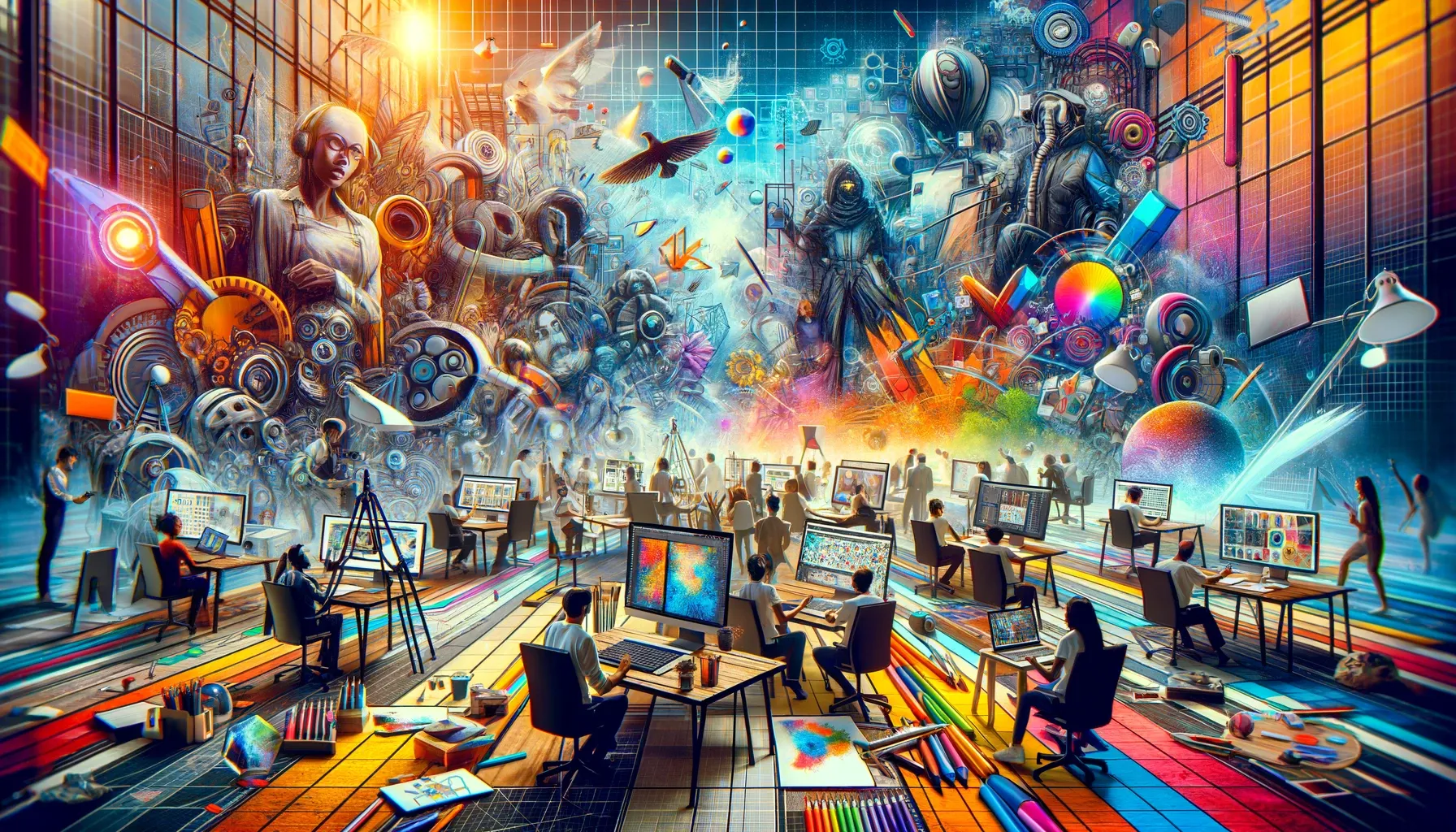How Big is The Market for NFTs
August 23, 2021 - 9 min read
This article breaks down the current value of the NFT market, the potential for growth, and highlights the rare coin, sports card market and dotcom bubbles as comparisons to help us understand what might be next for the NFT market.

I put together an infographic of market activity from 8/1 - 8/30 across the top 4 Ethereum marketplaces if you want to view those stats, you can do so by clicking here.
NFT Market — By The Numbers
In the first 6 months of 2021, there was $2.5 billion in NFT sales.
In June, OpenSea (a peer-to-peer marketplace that enables the buying and selling of NFTs) set a record with $125 million dollars in sales.
In the past 30 days, Opensea did $1.48 billion dollars in sales volume across 1.5 million transactions from 134,750 users.
Using this data, we can determine that the average NFT buyer on Opensea spent $10,983 in the past month.
In the past 24 hours (August 22nd, 2021) alone, OpenSea did nearly as much sales volume as it did in the entire month of June — $112.28 million.
If that pace is maintained for 30 days, that would be $3.36 billion in monthly sales volume.
Projected out over 12 months, that would be over $40 billion in sales on just one platform.
This doesn’t include other NFT marketplaces like NBA Topshot and Rarible.
NBA Top Shot had $23.86 million in sales volume across 91,059 traders in the past 30 days and Rarible had $1.53 million across 1,347 sales.
At this current, the NFT market is currently on a pace of over $40 billion dollars in annualized sales.
Can The NFT Market Keep Growing?
This is a hotly debated topic. In the next section, I’ll tackle whether or not NFTs are in a bubble, but for now, let’s take a look at how the NFT market compares to other collectibles markets and if it can keep growing:

Source: Startwithnfts.com compiled from various sources
Given the rapid increase in the volume of sales, I’ve left the NFT market cap at $7.5 billion, which I derived here, but keep in mind the market is on pace for over $40 billion given the latest data.
This would put NFTs at about 8x the sports card market cap, and nearly 80% of the global art market cap, which is quite an impressive feat in a short period of time.
However, what’s equally concerning and optimistic about NFTs is that sales volume is concentrated from a relatively small number of users — 134,750 on OpenSea.
Is it sustainable for those users to continue to spend an average of $10,000 per month on NFTs? Will the NFT market continue to expand from new users?
While it’s been reported that 4 million Americans have transacted an NFT, 134,750 buyers on OpenSea represent just .04% of the US population and an even smaller fraction of the global population.
This doesn’t automatically mean that millions of people with $10,000 per month to spare are going to enter the market, but it does signal an opportunity for growth.
Given what other collectible markets drive for market cap, we know that $40 billion isn’t a crazy number.
Heck, the global online gambling market size is valued at $53.7 billion dollars and the global gambling market is expected to grow to $876 billion by 2026.
It’s been reported, although not much accuracy was provided, that 26% of the global population gambles. That’s over 1 billion people.
This is an important stat for the NFT market because some aspects of it emulate gambling.
For example, you may spend money minting a project for a low cost in hopes that you get a rare asset or that the project appreciates in value. There’s a rush from doing this like opening a pack of sports cards or placing a bet on your team to win a game.
What’s interesting and unique about NFTs is that they can appeal to a diverse base of customers:
Art-focused NFT Projects
Sport-focused NFT Projects
Utility-based NFT Projects
Video-game Focused NFT Projects
Gambling appeal — buying or minting a project to see if it grows in value
Institutional Investors
It might be possible that NFTs “take” from the market-caps of other collectibles and adjacent markets. In this scenario, the $40 billion market cap wouldn’t be shocking, and it would have a real chance to grow.
Conversely, with such a small current user base spending significant money monthly it wouldn’t be surprising to see a pullback before wide-scale adoption of NFTs occurs.
While there are nearly 52 million people in the world who own 1 million US dollars or more, this does not mean it’s all liquid, and also does not mean they are going to spend money on NFTs.
Millionaires also aren’t the only ones who NFTs might appeal to — 57% of American household income is greater than $75,000 per year. That’s over 73 million households in the US alone.
NFTs have the ingredients to become a global powerhouse, but it’s important not to get caught up in these numbers to use as justification for spending what you can afford to lose on projects.
We’re in an exciting time in the market, but supply may outpace demand before more people learn about NFTs, get accustomed to the technology and decide to spend their money in the space.
While all the data points to tremendous growth opportunities, there is a lot of chatter about whether or not NFTs may potentially be in a bubble:

Source: Twitter
Others, like Gary Vaynerchuk, are cautioning people to not spend more than can afford to lose on NFTs given the rapid increase in the supply of projects:

Source: Twitter
No matter what the numbers show, Gary’s advice is critically important. In order for the NFT market to succeed long-term, users need to have a positive experience. If a lot of people get left holding the bag and lose serious money, the market participants will drop.
Are NFTs in a Bubble?
The short answer: Yes and No.
With any collectible market, it needs to be understood that there are submarkets and once you understand that concept, you can get a better grasp on what is going to work out in the long term.
A prime example is the rare coin bubble of the late 1980s.
A variety of factors, including speculation, drove the prices for rare coins to record heights:

Source: PCGS
May of 1989 saw sales volumes in the rare coin market that haven’t been seen since. Perhaps this was due to investors seeking alternative investments after the 1987 Black Monday stock market crash combined with an element of speculation.
The market came crashing down in December of 1994, marking a 74% loss:

Source: PCGS
Despite these sobering numbers when looking at aggregate sales volume data across an index of 3,000 rare coins, some have ballooned in value since the 1989 peak.
In July 1989 (during the peak) a rare Dexter-Dunham-Bareford 1804 Silver Dollar (the holy grail of rare coins) sold for $990,000.
In August of 2013, the rare coin sold for $3.29 million dollars, a 232% increase in value.
Additionally, the top 10 Auction records for rare coins all occurred after 1989, with the highest record sale happening in June 2021 for $18.9 million.
The late eighties and early nineties didn’t just bring a bubble to rare coins, it also brought on a bubble for sports cards.
The top 5 most graded sports cards of all time were produced in the late 1980s.
Due to that overproduction of cards, and a lack of knowledge about the supply from collectors and investors, many cards produced in that era lost up to 30% of their value.
However, despite many of those cards being worth less than $50 today, there are some cards from that time period worth significant money.
The 1990 Frank Thomas Topps No Name on Front rookie card is one of them.
Frank Thomas’ 1990 Topps rookie card has a supply of 3,052 assigned a grade of PSA 10. His error card, which doesn’t include his name on the front, has just 1 copy in a PSA 10, 19 copies in a PSA 9, and 93 copies in a PSA 8.
For comparison, the non-error card is valued at $269 in a PSA 10 copy, whereas the error card sold for over $24,000 in May of 2012 and is projected to be worth at least $50,000 in today’s market.
That’s an 18,487% difference in value!
There is no better example in any collectibles market that demonstrates the value of scarcity than the 1990 Topps Frank Thomas error card.
So where does this leave us with NFTs?
From the examples above, we know that scarcity matters and that rare assets have a better chance of surviving a bear market.
It’s difficult to overlook the sudden influx of capital and the rise in the supply of new projects but it would be premature to call the entire NFT market a bubble.
Some projects will be winners. Some will be losers. It’s better to take the time to do your research before buying in.
And at some point, we will see certain projects crash and pundits will rush to call NFTs a fad that is now over.
It’s just like the 1995–2000 dotcom bubble, when valuations of internet companies rose by 582% then later fell by 75% beginning in March 2000 to October 2002.
Just like with rare coins and the sports card market, some companies survived that bubble and came out strong (Amazon, Google, eBay to name a few).
Key Takeaways
The NFT market is on pace for a $40 billion annualized market cap, and while that number actually isn’t too far-fetched given data from other collectible markets, we are very early in terms of the adoption amongst its user base.
This could be a good thing in that new entrants will sustain the current pace of growth, or it could mean that there aren’t enough people already involved and we’ll see some pullbacks.
As we’ve seen with 3 different markets in this article, a fast, accelerated run-up has been associated with ensuing contractions where the “blue-chips” survive and thrive even beyond peak activity.
My bet is that we see a similar pattern play out in the NFT space, but the timeline is unclear. Things move much faster with NFTs than any other market we’ve seen.
Only time will tell, but as your third reminder, be thoughtful about how you spend your money knowing that we’re in exciting times with a lot of potential, but that some parts of the NFT market may in fact be overvalued.
Newsletter
Enter your email address below to subscribe to my newsletter
latest posts





